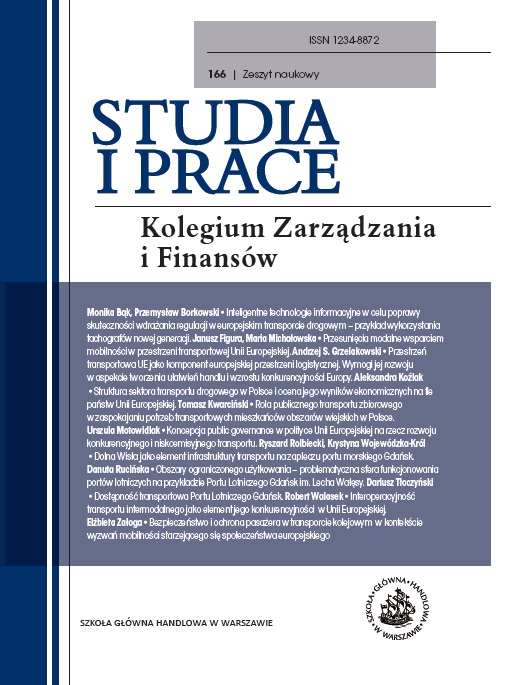Modal Shift as Support to Mobility in the European Union Transport Area
DOI:
https://doi.org/10.33119/SIP.2018.166.2Keywords:
modal shift, mobility, transportation policy, European transport spaceAbstract
The paper presents results of studies on modal shift as an element that supports mobility within the European Transport Area. The authors have focused particularly on the TSL sector and share data obtained from the analysis of changes in industrial structure in the road transport of goods, domestic cargo transport, EU cargo transport and the proportion of domestic to international road transport volume over the period 2010–2015. Transport industrial structure between diverse modes of transport has not been changing radically within the EU and currently is 50:33:12:4:0.1 representing, respectively, road, maritime, rail, inland waterways, and air transport. Conclusion from the research boils down to the observation that changes in industrial structure of transport pose a real challenge to the development of the EU transport area.
Downloads
References
2. Brdulak, J. (2005) Rozwój elementów infrastruktury życia społeczno-gospodarczego. Warszawa: SGH.
3. Domański, R., Marciniak, A. (2003). Sieciowe koncepcje gospodarki miast i regionów. Warszawa: Komitet Przestrzennego Zagospodarowania Kraju PAN.
4. Komornicki, T. (2013). Powiązania funkcjonalne pomiędzy polskimi metropoliami. Warszawa: Wydawnictwo Akademickie Sedno: Instytut Geografii i Przestrzennego Zagospodarowania PAN.
5. Rosik, P., Goliszek, S., Kowalczyk, K. (2015). The impact of selected road projects on changes in traffic intensity. Europa XXI. Warszawa: IGiPZ PAN.
6. Rosik, P., Kowalczyk, K. (2015). Rozwój infrastruktury drogowej i kolejowej a przesunięcia modalne w Polsce w latach 2000–2010. Warszawa: Instytut Geografii i Przestrzennego Zagospodarowania im. Stanisława Leszczyckiego PAN. Prace Geograficzne nr 248.
7. www.europe.eu/eurostat









